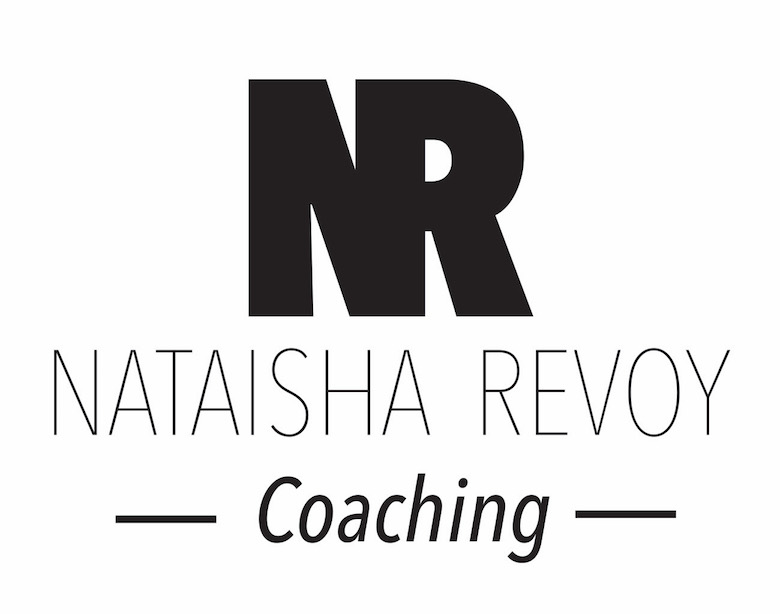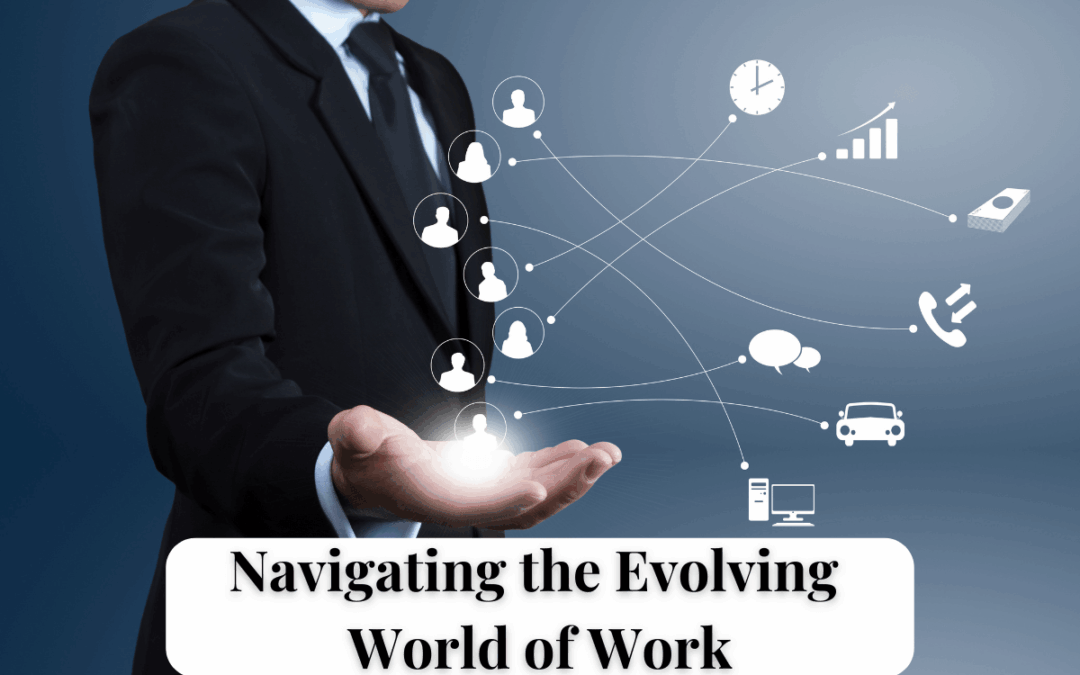The Ever-Evolving Workplace
The workplace is undergoing rapid transformation, with changes that seem to accelerate each day. From technological advances to shifting leadership dynamics, the challenges for today’s leaders are mounting. The pressure to stay ahead, deliver results, and support teams while managing personal well-being has never been greater.
As a leader, navigating this whirlwind is tough. It’s not just about adapting—it’s about finding ways to lead through these changes while staying grounded in your values and purpose. In this post, we’ll explore what’s driving this fast-paced change, how it’s affecting the workplace, and how you can navigate this evolution without losing sight of your leadership purpose and your team’s well-being.
The Forces Driving the Pace of Change
1. AI and Automation: A Shift You Can’t Ignore

Artificial intelligence (AI) and automation are often discussed in tech circles, but for many leaders, these terms can feel overwhelming. Simply put, AI is the use of technology that allows machines to perform tasks that would typically require human intelligence. While these tools streamline processes and improve efficiency, they also present new challenges for leaders. For instance, leaders must learn how to integrate these technologies into their workflow and help their teams adapt to these changes. Understanding these tools and their implications is crucial for leaders, but the challenge lies in fostering an environment that embraces change without overwhelming the team.
For those new to AI, it’s important to understand that these technologies are here to enhance the work we do, not replace it. AI can automate repetitive tasks, provide data insights, and improve decision-making processes, which can allow leaders to focus more on strategy and team development. While AI’s influence in the workplace is still growing, it’s clear that technology is reshaping industries, including how decisions are made and what skills are required. But the key is integrating it smoothly into your team’s workflow while maintaining their engagement and morale. It’s okay to feel unsure or even overwhelmed as you navigate these changes. The key is to take it one step at a time.
2. Collaboration Tools: A New Era of Team Dynamics

In today’s workplace, collaboration tools like Slack, Microsoft Teams, and Zoom are more than just convenience—they’ve become a lifeline for team communication. However, they also come with an added urgency and pressure. The expectation of constant availability, the ease of instant messaging, and the influx of notifications can feel overwhelming. Many leaders and team members are experiencing “meeting fatigue”—with back-to-back meetings, emails, and chat conversations filling up the day.
These tools create an environment where “no breaks” often becomes the unspoken norm. The constant stream of messages and meetings can make it difficult to focus on deep work or take time for mental resets. For leaders, the challenge is not just managing these tools but creating boundaries that protect both individual and team well-being while maintaining productivity and communication.
3. Shifting Leadership Expectations: Leading Through Uncertainty

Leadership is no longer just about managing projects—it’s about guiding your team through uncertainty and rapid change. As the pace of change accelerates, the expectations placed on leaders are evolving. You’re not just required to keep up with technological changes, but also to lead your team through digital transformation, innovate, and ensure your team’s well-being.
This isn’t easy. The pace is relentless, and it’s okay to feel the weight of it. The pressure to stay ahead and constantly adapt is exhausting. Yet, in this moment, it’s important to remember that you’re not alone in these struggles. This is a time for leaders to evolve, both in how we support our teams and in how we care for ourselves. Now is the time to ask: How do we want to lead in these times? How do we support our own well-being, and that of our teams?
While embracing change is essential, it’s also vital to acknowledge that it’s okay to feel stress, uncertainty, and even exhaustion. These feelings are natural and part of the leadership journey during times of transformation. The key is finding ways to manage that stress, reframe it, and turn it into action that not only helps you thrive but also sets an example for your team.
How Leaders Can Navigate the Evolving Workplace
1. Stay Grounded in Your Leadership Purpose

Amidst the constant change, it’s easy to get lost in the whirlwind of new tools, technologies, and shifting strategies. However, the most effective leaders stay grounded in their purpose. By focusing on your core values and leadership vision, you provide clarity not only for yourself but also for your team.
When you lead with purpose, you offer a steady foundation during times of uncertainty. This clarity enables you to weather challenges with resilience, helps you make decisions that are aligned with your values and guides your team through challenging situations.
2. Focus on Growth, Not Just Outcomes

In a recent coaching conversation, we discussed the importance of focusing on growth rather than the end result. The outcome of any project can change, often due to shifting priorities or strategies. Instead of focusing solely on the project or end result, we shifted the focus to how the team could develop the ability to work within a changing environment.
This approach encouraged the team to focus on growth areas like emotional agility, learning mindsets, and resilience. We emphasized how personal growth could become the real measure of success, instead of the final project outcome. This shift helped the team become more adaptable, more focused on continuous learning, and better equipped to navigate changing circumstances.
3. Prioritize Your Well-Being—And Your Team’s

The pace of change is undeniably stressful. As leaders, we must not only care for the strategic health of our organizations but also for the emotional and mental well-being of ourselves and our teams. The constant pressure to perform can easily lead to burnout. It’s easy to neglect our well-being while focusing on meeting external demands. You cannot lead effectively if you’re running on empty. By making well-being a priority—both your own and your team’s—you create a space for growth, innovation, and resilience in the face of change.
Creating an environment that values well-being is essential, not just for individual leaders but for the entire organization. This includes setting boundaries, ensuring time for rest, and encouraging emotional support. By doing so, you empower your team to navigate challenges with resilience and clarity.
Conclusion: Embrace Change, Lead with Purpose
The workplace is evolving faster than ever before, and it’s not slowing down. As leaders, it’s not just about keeping up—it’s about leading with purpose, focusing on growth, and prioritizing well-being of yourself and your team. This moment in time is a chance to reflect on how we want to lead and what kind of leadership will support the collective well-being of everyone involved.
This is a time for us, as leaders, to reflect on how we want to evolve—not just in our roles but as human beings. Embracing change is not always easy, but it is an opportunity for growth and transformation.
This blog post is part of a four-part series on leading through change. In the next post, we’ll dive deeper into The Emotional Toll of Change on Leaders, exploring the personal and emotional challenges that come with navigating a rapidly evolving work environment.
Stay Connected and Keep Growing as a Leader
If you found this post helpful, sign up to receive weekly emails with more leadership perspectives, practical tips, and tools designed to help you navigate the challenges of leading in today’s fast-paced world. Each week, you’ll get insights that will inspire your growth, support your well-being, and help you lead with confidence.
Get leadership strategies directly in your inbox – Click here to get started
Leading through transformation is understandably stressful and overwhelming. If you’re unsure of how to lead in this moment, you are not alone. I’m here to partner with you to discover how you can lead with purpose, resilience, and clarity.
If you’re ready to receive support: Click here to set up a discovery session. Let’s start the conversation today!
I’d also love to hear from you—What’s been the biggest challenge for you as a leader in times of rapid change? Share your thoughts in the comments below, and let’s continue the conversation.

